how to paint portraits in oil
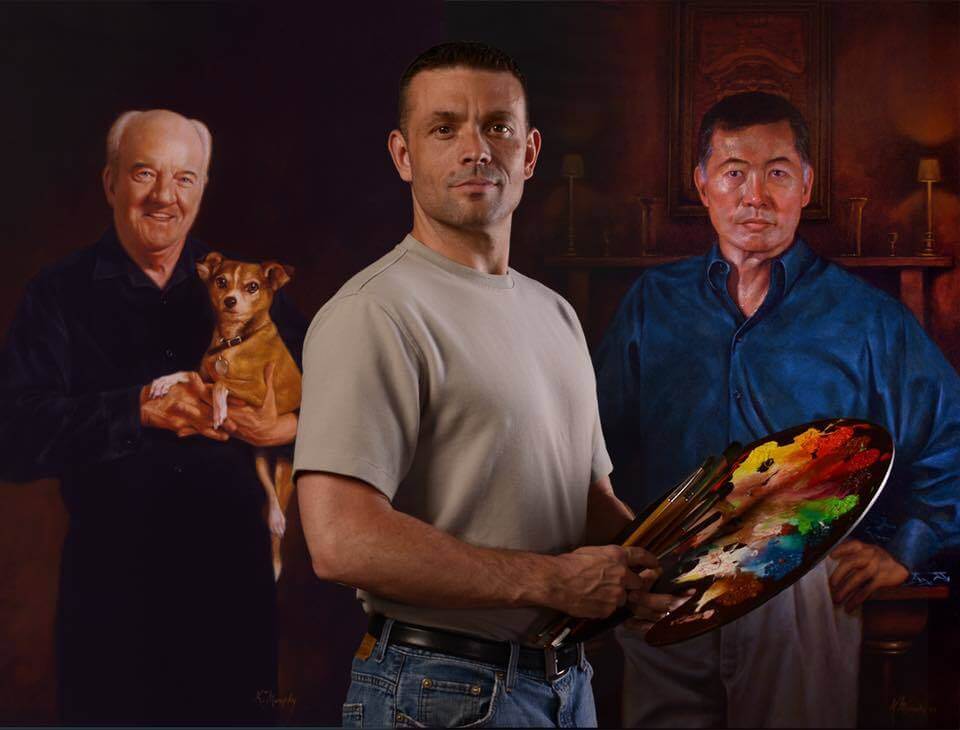
Illustrator and Portraitist, Kevin Murphy with his commissioned realistic portraits of Richard Herd, actor "Seinfeld" and George Takei (on right), actor "Star Trek."
From a technical standpoint, you never paint an actual portrait, much less a realistic portrait.
As an artist, you paint shapes, values, and colors and you connect them with types of edges. If you've properly done it as an abstract piece of art, then a realistic portrait painting emerges from it.
There are a lot of things that lead up to making a portrait for an artist, and few artists have the same approach.
Regardless of technique or medium used to create the portrait, changing the way you think about a portrait can elevate and revolutionize your work.
A realistic portrait is a vital and important part of the art world. It has the ability to anchor a moment in time forever.
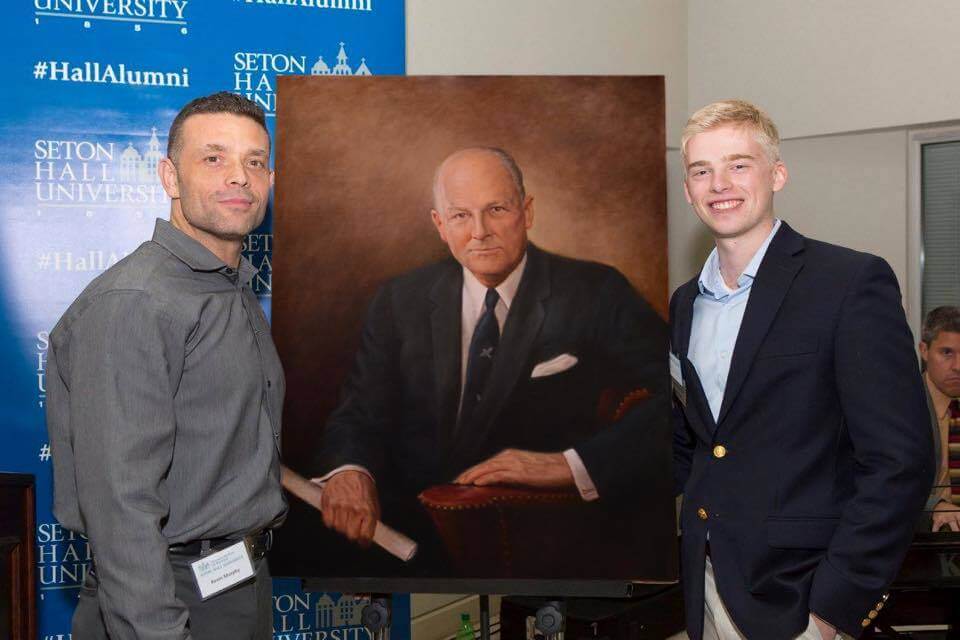
Kevin with his student, Daniel Folta, exhibiting Folta's work at Seton Hall University
Think Abstractly to Paint a Realistic Portrait
The more complex the subject becomes, the more you have to think about it abstractly in order to be able to produce a painting that's of any value.
You might think that the more realistic the thing you're trying to paint, the more you have to grab the magnifying glass and slavishly copy. But the truth of the matter is much different.
You can see it in artwork by painters like John Singer Sargent. Sargent's portraits are loose and fluid and there are bold strokes that, once they go down, are never touched again. These bold strokes don't detract in any way, shape, or form, from the impression of the person that you're seeing.
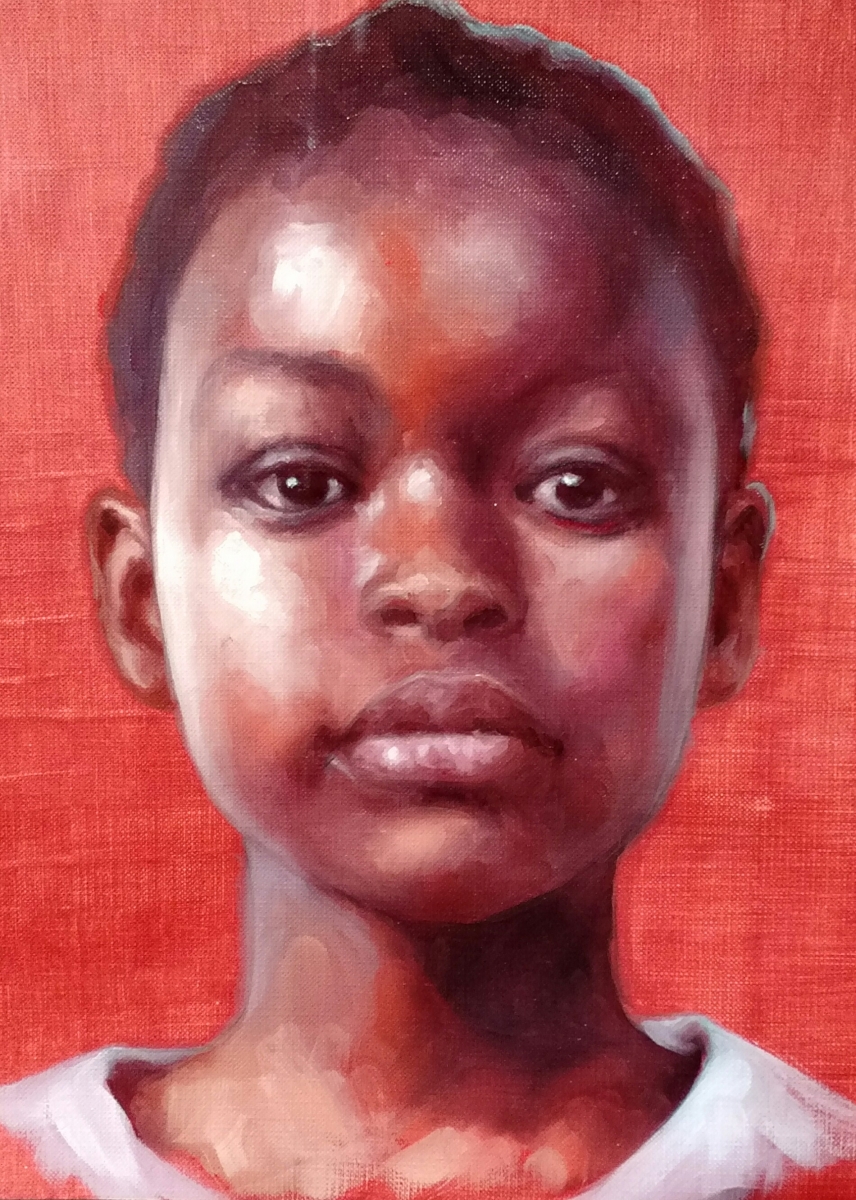
Gestural, realistic Portrait done by Evolve instructor, Abigail Rugg
If the abstract shape is right, the value in the colors is right, and the edges that connect them are right, then a perfect representation of the nose you're looking at emerges from the process.
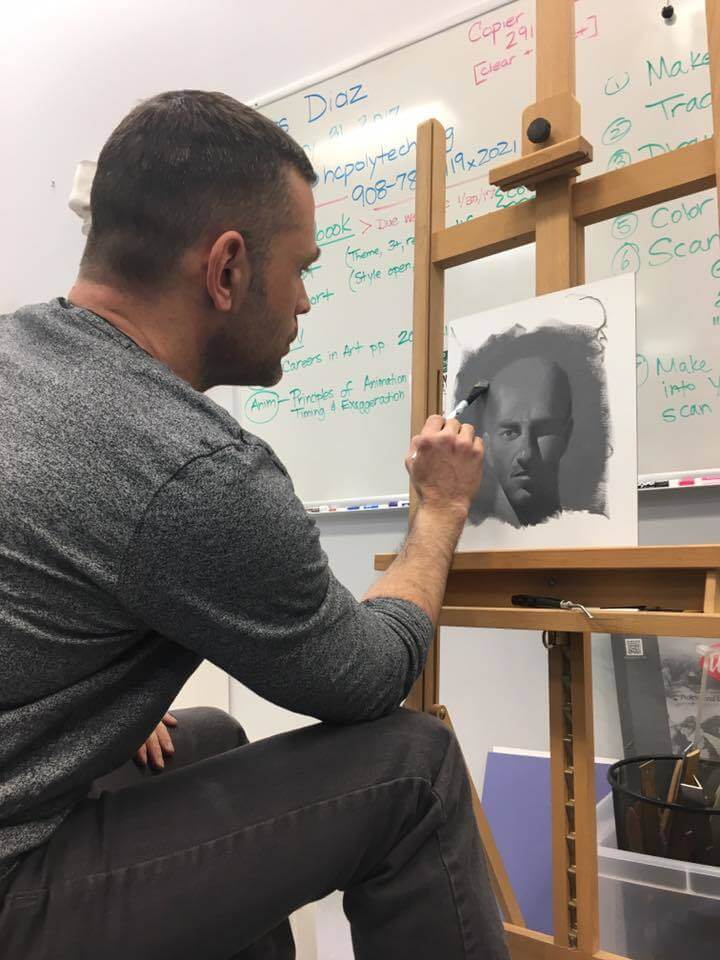
Kevin Murphy demonstrating a quick portrait from life.
The Goal of a Realistic Portrait Is The Process
It's never the goal to make an eye or a nose. The goal is in the process: to step by step get the right value, the right color, and place it in the right order in the right shape, marrying the edges and watching the nose grow from the process but never worrying about the nose as an end game.
If all of the components work, then the realistic portrait emerges effortlessly from the process. This is the beauty of deeply understanding of how values, edges, and color work together to create art.
A ball and a portrait are the same things. A ball and a portrait are both painted using values, colors, and edges. Nothing else.
The shape of the shadow on the ball and the shape of the light on the ball are just abstract shapes. A portrait is just more shadow-shapes and more light-shapes, but it's nothing more than that.
The moment that you start thinking of a portrait as being a painting of a face you're doomed. It's too overwhelming and there's too much information to paint a face. But if you think of it as a series of shadows and lights you can start to capture a likeness of the face.
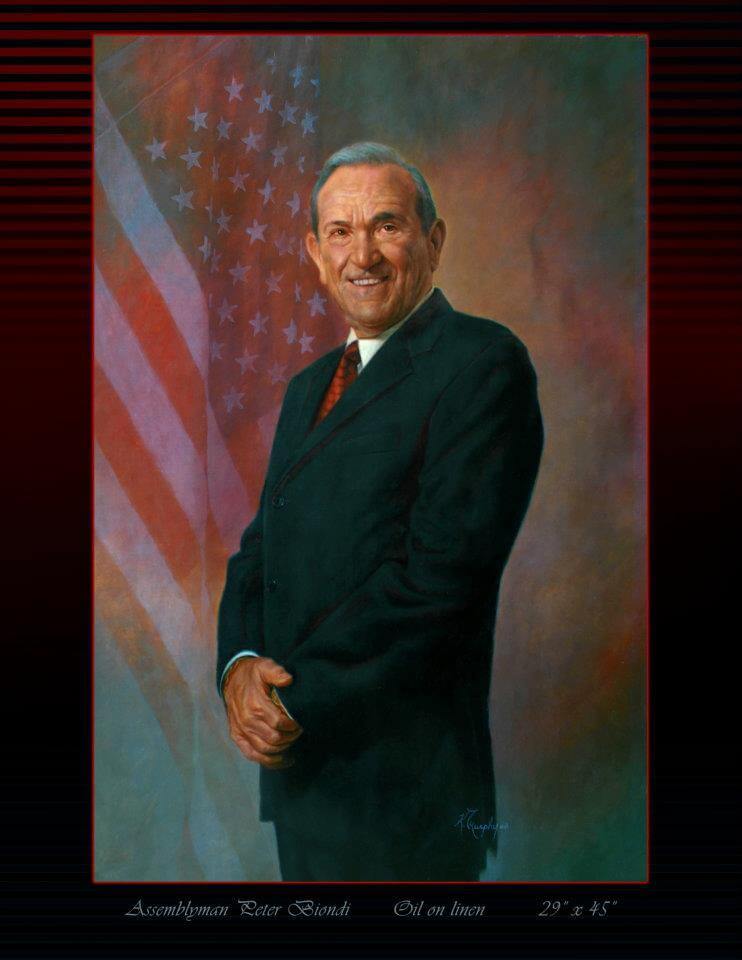
An oil painting portrait completed by Kevin Murphy of Assemblyman Peter Biondi.
Details of a Realistic Portrait Are The Easy Part
Contrary to how most people think about it, the details of the realistic portrait are the easy part.
Rendering an eye is difficult when you think about rendering an eye. On the other hand, breaking up the shape of an eye socket blocked in with a one-inch brush, that's not so tough. The eye emerges from the decisions that you make in the process but at no point do you paint an eye. It's just too complex a subject.
Decisions are made along the way while painting a realistic portrait, and they're best made by thinking abstractly about the thing you're looking at.
Why Quality Realistic Portraits Matter
Once you begin to change the way you think about creating portraits, you then must change your thinking about why you are creating portraits.
Evolve founder Kevin Murphy states:
For years, I still didn't consider myself a portrait painter. I returned the calls and I said to them, I'm not a portrait painter and it's not really something that I see myself doing long-term but I'd be happy to do your portrait…
And that actually became my pattern for a very long time because I didn't see myself as a portrait painter. It wasn't until a few years later when something changed. I did a portrait for a 9/11 widow and that really solidified my understanding that I was a portrait painter.
What made me enjoy it so much was meeting the people that I wouldn't otherwise ever cross paths with and getting to know them and trying to immortalize them or their kids or whoever it was that was being painted and do them justice. That's a real challenge. Up until taking on the first portrait, I really never understood what the challenge was, and how rewarding it could be.
A realistic portrait is something that once somebody has it in their home, it freezes a moment in time forever. It's just such a cool thing to be part of that. To be part of that tradition is very rewarding.
Conclusion
The ability to paint a realistic portrait that may mean so much to your client is priceless. But in order to create your best work, it is essential to elevate the thought process behind your painting. Whether you are working on landscapes, people, animals, or abstract art, the thought process behind an artist's work is vital.
Begin to elevate your thought process and your work will begin to improve.
FREE MASTERCLASS:
The 4 Part Framework to Develop Artistic Excellence in 12 Months
how to paint portraits in oil
Source: https://evolveartist.com/blog/oil-painting-portrait/
Posted by: drinnonhused1980.blogspot.com

0 Response to "how to paint portraits in oil"
Post a Comment